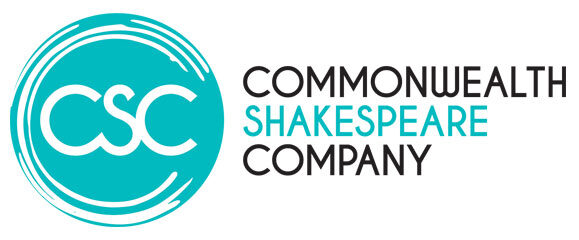How to Cut a Shakespeare Play in a Million Tiny Steps
/cloudfront-us-east-1.images.arcpublishing.com/bostonglobe/NJR6WET72POKMEW4OPUABYD6TM.jpg)
From left: Director Bryn Boice leads Dylan Wack, Ekemini Ekpo, Xander Viera, and Regine Vital in a rehearsal of “A Midsummer Night’s Dream”. JOSH REYNOLDS FOR THE BOSTON GLOBE
By Bryn Boice
One of the great joys and terrors of my job at CSC is trimming Shakespeare’s plays down from 3+ hours to a slim 90 minutes for our Stage2 student matinees. There is much to consider when you cut a play, so here are my tips and tricks for those who are embarking on this feat themselves or are just curious as to how we go about it.
First, I read the play in its entirety. This may sound elementary, but if you try to do a shortcut and cut as you go, you may inadvertently trim something out that becomes incredibly important later. I do, however, like to read the Folger or MIT versions first–these are readily available online and are easy to cut and paste into a Google document. The reason I do this is so that during this first “clean” read of the play, I can mark segments with a comment that SEEM cuttable, but that I won’t touch just yet.
Once I have the full plot of the play freshly in my mind, I have to consider a couple of things:
- How many actors am I able to cast in this play?
- How long does it need to be (relatively or exactly)?
- Who is my audience?
- What themes or images do I want to highlight?
How many actors am I able to cast in this play?
As you might imagine, it’s not always financially feasible to cast 34 people in a show, as much as we would like to. Many of Shakespeare’s plays have cast sizes that are simply impossible in this moment of arts funding cuts, therefore you’ll see increasingly small cast sizes that not only accommodate the budget, but can highlight actors’ incredible ability to inhabit multiple characters. For our Stage2 performances, we cast a cohort of 12 actors. As I cut, I need to remember the number of bodies I actually have to work with–for example, in the first scene of Romeo & Juliet, there is a giant brawl in the streets of Verona. The brawl is taking place, and suddenly all four of the parents (Lady & Lord Capulet and Lady & Lord Montague) rush on the stage. That means I am down to 8 people fighting in the street; however, I should also consider that neither Romeo nor Juliet should be there, and that the Prince needs to storm in to break up the fight. That reduces my brawl to 5. Oh yes, and I should also consider that both Tybalt and Benvolio should “happen upon” the fight and join in. So that leaves a brawl of 3. Which is not really a brawl. SO. My job is to see who can double with the help of some fancy quick changes. (In this instance, we’re bringing the actors who play Romeo and the Prince on to play other characters that brawl, with an early injury and a quick change for the actor playing Prince.) This is just the first few pages of the script, but as you can see, the number of bodies becomes important. (And I can’t cut TOO many lines here, because I need to give my Prince time to change!)
How long does it need to be?
Knowing how long you’re aiming for the cut to be is another important consideration. For our Stage2 matinees, we have promised an intermission-less 90-100 minutes so that students can get back to school. This means I can’t do so many small internal cuts, but need to make some pretty sweeping decisions about what to let go. Whole characters or story lines may need to be cut so that I can keep the main plot (and the most famous scenes) relatively intact. Because Romeo & Juliet is so long, clocking in at over 3 hours when uncut, we have to be a little ruthless! In this case, for our upcoming show, I conflated the characters of Benvolio and Balthasar to make them one, I cut Peter, Gregory, and all Servants, and I cut the deaths of Lady Montague and Paris. Which leads me to my next question–
Who is my audience?
Because I am shaping this cut around a tween and teen audience, I need to keep the main love story, the parental strife, and all of the most beautiful and famous lines in the script because that’s what I know my audience has been studying. If I had another ten minutes, I would keep the Paris character resolution and death in the play, but cutting this shifts focus to the central couple, and allows for more bodies mourning at the grave (a two-for-one win!)
I also like to consider my audience when making smaller, internal cuts. I do what I can to preserve difficult, more antiquated passages IF I think my actors can help physically tell the story of that line. For example, a student might not know what some of these words mean, spoken by Benvolio:
Tut, you saw her fair, none else being by,
Herself poised with herself in either eye:
But in that crystal scales let there be weigh’d
Your lady’s love against some other maid
That I will show you shining at this feast,
And she shall scant show well that now shows best.
If I think the actor can easily physicalize what they’re saying, it stays. Here, Benvolio can simply hold a hand up for Rosaline, and hold another hand up for “some other maid” and we start to be able to hear what he is saying–he’ll find someone else to compare Romeo’s love to. If it’s convoluted, far too antiquated, not easily fleshed out vocally/physically, and not plot-necessary, it goes! Especially in a time crunch, and with a younger audience.
What themes or images do I want to highlight?
In this particular cut, I sought to highlight Romeo’s need TO love, be IN love, and to BE loved, and Juliet’s slightly more careful nature. I emphasized and kept all natural elements, but did end up cutting most overtly Western religious elements, because my setting is the “sci-fi” Planet Verona, not Earth. In my concept, I am imagining the Capulet family adheres to structure, formality (earth and fire) while the Montagues practice flow and ease (air and water). Think Battlestar Galactica military-style sci-fi versus the more spiritual fighting Jedi. As I cut, I found myself restoring any section that mentioned the stars, the sun, the clouds, birds, any and all natural elements, in order to give an organic feeling to this planet. I noticed that Lady Montague doesn’t speak much, so I spread Lord and Lady Montague’s lines more evenly between them. Flow and ease, to me, means more agency and cooperation flowing between them. I kept everything Lord Capulet says that is rules-based or strict intact–anything that shows his short fuse. I made sure Juliet had a clear moment of losing her innocence about this world and finding her power when she learns Romeo is banished, but I cut a large portion of her painful monologue about it, because she repeats her feelings a number of times.
So you’ll see, cutting a Shakespeare play is a bit like sewing up bits of a quilt, pulling the bounty of beautiful ideas together to make a new, artful, whole work that can be appreciated for new and relevant reasons. It’s an honor to work with these words like this, and they are forgiving in how elastic they are. It’s part of the reason Shakespeare’s plays still seem to work today–every piece you see is a new interpretation, a fresh cut, another artist’s collection of impressions, inspirations, and production parameters!


























